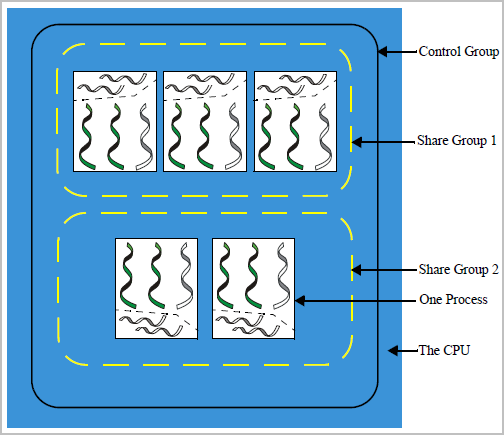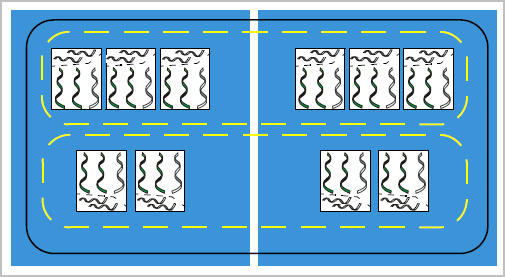Organizing Chaos
It is possible to debug programs that are running thousands of processes and threads across hundreds of computers by individually looking at each. However, this is almost always impractical. The only workable approach is to organize your processes and threads into groups and then debug your program by using these groups. In other words, in a multi-process, multi-threaded program, you are most often not programming each process or thread individually. Instead, most high-performance computing programs perform the same or similar activities on different sets of data.
TotalView cannot know your program’s architecture; however, it can make some intelligent guesses based on what your program is executing and where the program counter is. Using this information, TotalView automatically organizes your processes and threads into the following predefined groups:
The control and share groups contain only processes; the workers and lockstep groups contain only threads.
TotalView lets you manipulate processes and threads individually and by groups. In addition, you can create your own groups and manipulate a group’s contents (to some extent). For more information, see Chapter 26, Group, Process, and Thread Control .
Figure 203 shows a processor running five processes (ignoring daemons and other programs not related to your program) and the threads within the processes, along with a control group and two share groups within the control group.
 |
Many of the elements in this figure are used in other figures in this book. These elements are as follows:
CPU
The one outer square represents the CPU. All elements in the drawing operate within one CPU.
Processes
The five white inner squares represent processes being executed by the CPU.
Control Group
The large rounded rectangle that surrounds the five processes shows one control group. This diagram doesn’t indicate which process is the main procedure.
Share Groups
The two smaller rounded rectangles having yellow dashed lines surround processes in a share group. This drawing shows two share groups within one control group. The three processes in the first share group have the same executable. The two processes in the second share group share a second executable.
The control group and the share group contain only processes.
Figure 204 shows how TotalView organizes the threads in the previous figure, adding a workers group and two lockstep groups.
 |
NOTE: This figure doesn’t show the control group since it encompasses everything in this figure. That is, this example’s control group contains all of the program’s lockstep, share, and worker group’s processes and threads.
The additional elements in this figure are as follows:
Workers Group
All nonmanager threads within the control group make up the workers group. This group includes service threads.
Lockstep Groups
Each share group has its own lockstep group. The previous figure shows two lockstep groups, one in each share group.
Service Threads
Each process has one service thread. A process can have any number of service threads, but this figure shows only one.
Manager Threads
The ten manager threads are the only threads that do not participate in the workers group.
Figure 205 extends Figure 204 to show the same kinds of information executing on two processors.
 |
This figure differs from others in this section because it shows ten processes executing within two processors rather than five processes within one processor. Although the number of processors has changed, the number of control and share groups is unchanged. Note that, while this makes a nice example, most programs are not this regular.
TotalView’s design on organizing groups, processes, and threads | |
Setting the focus |





